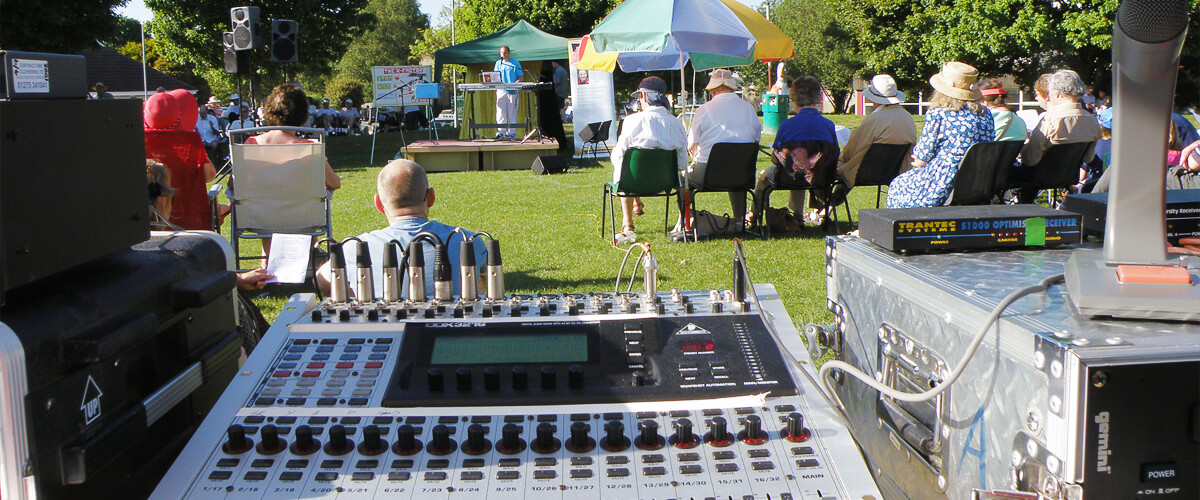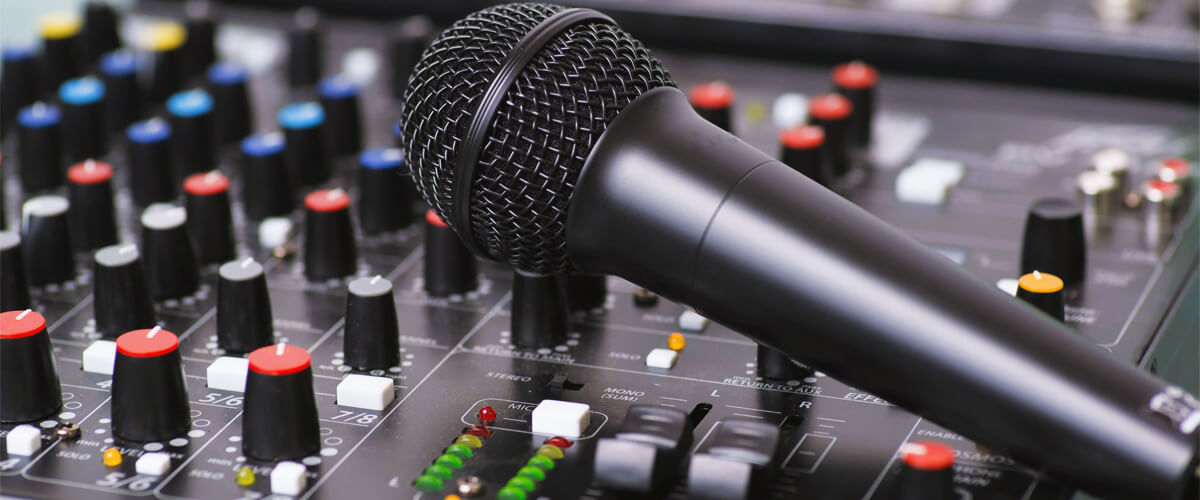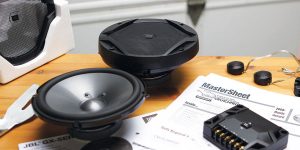Standing for “Public Address”, PA systems greatly ensure clear and amplified sound. When discussing PA systems, the term “columns” refers to a specific type of loudspeaker design. The primary objective of this system is to amplify sound sources, such as microphones, instruments, or audio playback devices, and distribute the sound evenly throughout the venue.
In the following sections, I will go deeper into the question of “what does PA stand for speakers,” shedding light on the diverse configurations and cutting-edge technologies.
Components of a PA system

The public address system consists of several key components that work together to boost and distribute sound, including four components I will describe for you.
Speakers
Speakers are the final output devices that convert the amplified electrical signals back into audible sound waves. They come in various sizes and configurations.
Types of speakers:
- Full-range speakers incorporate a single driver or multiple drivers in a single enclosure, allowing them to handle a broad spectrum of audio signals.
- Subwoofers often focus on the low-end frequencies that standard speakers may not reproduce as effectively, such as bass.
Speaker configurations:
- Passive speakers rely on the boosting provided by an external power source to convert electrical signals into audible sound. They are used in professional audio setups, where a separate power amplifier is connected to the speakers.
- Active speakers have a built-in amplifier within the speaker enclosure and can receive audio signals directly from a mixer or audio source without the external amplifier. They are often used in portable PA systems.
Amplifiers
They have various features that enhance their functionality and provide additional control over the audio signal. Some common amplifier features include:
- Gain control: you set the desired level of amplification based on the input signal’s characteristics and the requirements of the connected speakers.
- Equalization: offers to boost or cut specific frequencies to tailor the sound to your preferences.
- Signal processing: you can manipulate the audio signal further and apply effects or dynamic control.
- Connectivity options: may include inputs for microphones, line-level devices, or audio interfaces, as well as outputs for speakers, headphones, or external recording devices.
Matching the amplifier and speakers correctly gives you optimal audio performance. I recommend considering the following aspects when matching them:
- Power matching: Any difference results in inadequate volume or distortion.
- Impedance matching: Mismatched impedance causes a loss of power transfer or damages the amplifier or speakers.
- Sensitivity matching: ensures efficient power usage and optimized performance.
Mixer
A mixer is a fundamental component of audio systems that serves as a control hub for adjusting and blending audio signals from various input devices.
In the following table, I will describe the key aspects to learn about them in a PA.
| Input Channels | Mixing and Blending | Connectivity Options | Monitoring and Headphone Outputs | Built-in Effects and Processing |
|---|---|---|---|---|
| Each input channel includes controls for adjusting the volume level, EQ, and pan of the individual source. The number of inputs varies depending on the mixer’s size and configuration. | Available faders or knobs to control the volume level of the input channel, allowing you to adjust the balance and mix of the audio sources. | Inputs for mics, instruments, line-level sources, or digital audio interfaces. Outputs include connections to speakers or amplifiers. | Monitoring options feature headphone outputs for private monitoring. Dedicated headphone controls adjust the headphone volume. | Include reverbs, delays, choruses, compressors, and equalizers. Signal processing tools help shape and control the dynamics, frequencies, and overall clarity of the sound. |
Microphones
Understanding the characteristics and applications of different microphone types will help you in selecting the most appropriate one for specific audio needs.
| Type | Features |
|---|---|
| Dynamic | They work based on electromagnetic induction, where a diaphragm is attached to a coil that moves within a magnetic field, generating an electrical signal. Handle high sound pressure levels and resist moisture and rough handling. |
| Condenser | They work based on changes in capacitance between a charged diaphragm and a fixed plate. These mics are exceptionally sensitive and have extended frequency responses. They require phantom power, usually provided by audio interfaces, mixers, or external power supplies. |
| Wireless | They consist of a microphone capsule and a transmitter that wirelessly transmits the audio signal to a receiver connected to a sound system. These microphones provide flexibility, allowing you to move around freely without being restricted by cables. |
Common applications of PA systems

PA systems meaning lies in versatile audio solutions used in various scenarios to provide clear and amplified sound reinforcement.
They are widely used in live music performances and concerts to hear the public address music clearly and at an appropriate volume. PA systems for concerts include large speakers, subwoofers for low-frequency reinforcement, and mixing consoles.
PA systems are widely used in public events, providing clear sound for speeches. Portable systems are often used for these purposes, allowing for easy setup.
You may find them in educational settings. Teachers are able to amplify their voices, so all students can hear the lesson. PA systems in educational institutions include wireless mics, speakers, and audio control systems.
They are also essential for corporate environments and business events. PA systems in these settings may include podium microphones, wireless microphones, and audio conferencing capabilities to connect remote participants.
Such systems are integral to sports venues and stadiums for important announcements, player introductions, and play-by-play commentary. They involve a distributed speaker system.
PA systems vs consumer audio systems

These are two distinct categories of audio equipment designed for different purposes and settings, which I’ll try to compare so you learn about each more:
| Type | Design & Functionality | Power Requirements & Output | Audio Quality & Fidelity | Scalability & Flexibility |
|---|---|---|---|---|
| PA system | For professional use. Made to be durable, portable, and capable of handling the demands of live events. PA systems design features modular designs with separate components for flexible setup configurations and customization. | Delivers high power output. Requires more power to achieve the necessary volume levels and maintain clarity. Uses dedicated power amplifiers and larger speakers or arrays to provide sufficient coverage and sound pressure levels. | Prioritizes sound reinforcement and intelligibility over absolute audio fidelity. Striving for good sound quality, it may not achieve the same level of audio fidelity as high-end consumer audio systems. | Can be scaled up or down by adding or removing components. Offers flexibility in terms of signal routing, connectivity options, and effects processing, allowing for customization and adaptation to different sound reinforcement scenarios. |
| Consumer audio system | For personal use. Goes all-in-one solutions with integrated speakers, amplifiers, and media playback capabilities for convenient and user-friendly operation. | Has low power requirements and output. Has integrated amplifiers and smaller speakers, providing adequate volume for personal spaces without the need for high power output. | Emphasizes audio fidelity and high-quality sound reproduction. Incorporates advanced audio processing technologies, high-quality components, and speaker designs optimized for accurate sound reproduction. | Designed as fixed setups. It’s not easily scalable or flexible. |
Proper speaker placement and aiming
I recommend performing sound checks and adjustments during setup for optimal speaker placement and aiming for the specific event:
- Consider the size and shape of the space, the acoustics, and any potential obstacles or reflective surfaces that may affect sound distribution.
- Determine the coverage area that needs to be reached by the speakers. It depends on the size of the venue and the expected audience.
- Take into account the height of the speakers. They should be elevated so the sound reaches the audience effectively, especially in larger venues.
- Proper subwoofer placement helps in achieving a balanced and powerful bass response. Place them on the ground or at a lower level, as low-frequency sounds are omnidirectional and less affected by vertical positioning.
Understanding what is a PA system and its functionality is important for achieving clear and amplified sound. PA systems, with their diverse range of speakers, amplifiers, mixers, and other audio equipment, serve as the backbone of various events.







